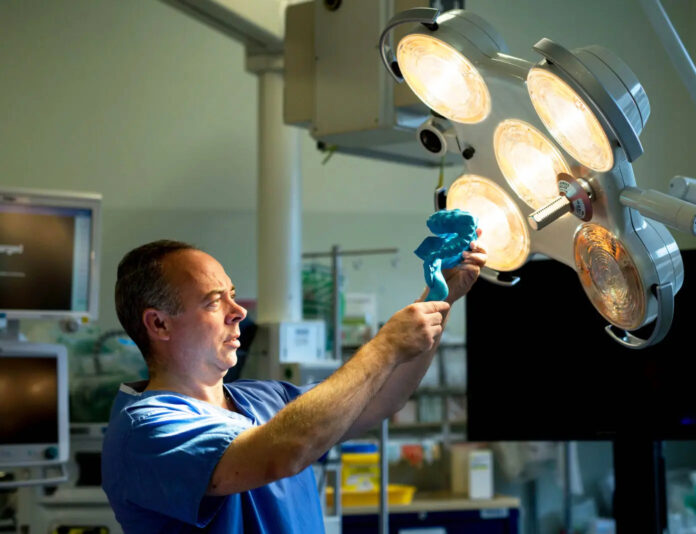
A COLORECTAL surgeon with the University of Limerick Hospitals Group has received a top honour from the Swedish Surgical Society for his leading role in research that has re-shaped our understanding of the human abdomen.
Prof John Calvin Coffey received the Bengt Ihre Lectureship and Silver Medal in recognition of research into the mesenteric organ, which provided an accurate description of abdominal anatomy and led to new treatments for multiple diseases.
In late August, Prof Coffey travelled to Stockholm for Kirurgveckan, the annual congress of the Swedish Surgical Society, where he presented his lecture, ‘The Mesentery, Our New Organ’, and received the Bengt Ihre Silver Medal.
While he is the named recipient of the award, Prof Coffey said he didn’t consider it appropriate to receive such an accolade individually.
“This is an award that recognises the contributions of so many people, in UL Hospitals Group and University of Limerick (UL), as well as our collaborators in the anatomy department at the University of Galway. The honour is a reflection of everybody’s contribution to this work”.
He emphasised that none of this work would have been possible without the support of UL Hospitals Group chief executive Prof Colette Cowan and her executive team.
“That has been the real key. It led to this research and everything that has flowed from it,” he said.
Prof Coffey, who is also Foundation Chair of Surgery at the UL School of Medicine, made global headlines in 2017 when he and his research team reclassified the mesentery, part of the human digestive system, as a new organ.
The research led to updates to some of the world’s most prestigious medical textbooks, including Gray’s Anatomy, the 2021 edition of which includes updates and a commentary based on the work.
“The identification of the mesentery opens up the exploration of the human abdomen. It provides a correct understanding, and clarifies how we’re made up, what our components are, and how they’re organised,” he explained.
“That’s very important, because it’s only when you understand what ‘normal’ is that you can understand what “abnormal” or disease is. We can now reinterpret every single abdominal disease in light of that new understanding.
“Because we can do that, we can generate and develop new treatments, which we have done in the recent past. This has led to the correction of abdominal diseases that clinical and surgical societies were all but stalled on for the past 70 or 80 years,” he added.

